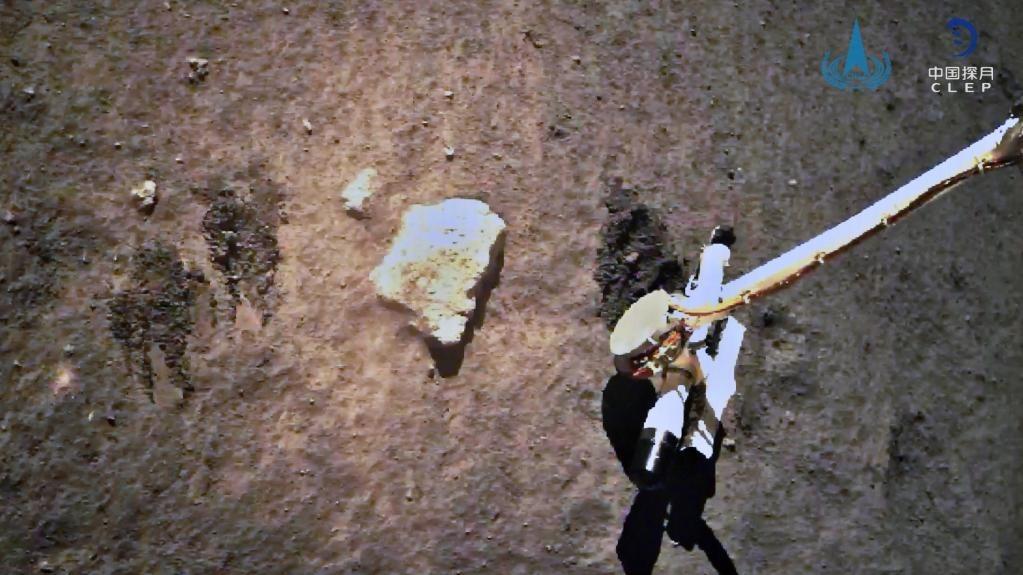
A team of Chinese scientists has made a groundbreaking discovery: molecular water locked within a mineral in lunar soil samples collected by the Chang'e 5 mission.
Remote sensing data had indicated signs of water molecules on the lunar surface in recent years, particularly in the polar regions, known as the permanently shadowed region. However, molecular water has not been found in returned lunar samples.
"Due to the high temperatures and vacuum environment on the moon, the existence of liquid water is not possible, so it was previously unclear how water molecules could exist on the moon," said Jin Shifeng, a member of the research team and an associate researcher at the Chinese Academy of Sciences' Institute of Physics.
READ MORE: Researchers find natural few-layer graphene in Chang'e-5 lunar soil samples
The research utilized lunar soil samples collected by the Chang'e 5 lunar probe in 2020.
China's first unmanned lunar sample return mission saw the Chang'e 5 probe collect basalt lunar soil samples from a high-latitude region of the moon, providing new opportunities for the study of lunar water.
Experts from the institute's Beijing National Laboratory for Condensed Matter Physics, Beijing University of Science and Technology, Tianjin University, CAS' Qinghai Salt Lake Institute and Zhengzhou University conducted the study. They determined that lunar water exists in a hydrated mineral known as ULM-1.
The research findings were published online in the academic journal Nature Astronomy on July 16.
According to the molecular formula, the mineral contains six crystalline water molecules, with the water molecules accounting for as much as 41 percent of the sample's mass.
About five years ago, a similar mineral was discovered in a volcano in Russia, providing new clues to the source of water on the moon.
"In other words, this mineral may have been formed by volcanic eruptions on the moon," Jin said.
"This indicates that lunar volcanic gases contain a significant amount of water. Thermodynamic calculations have revealed that the water content in lunar volcanoes is comparable to the driest volcanoes on Earth."
Jin said the crystalline water discovered in the lunar soil is relatively stable in the moon's vacuum environment.
ALSO READ: China reveals the weight of samples collected from moon's far side
The presence of water on the moon is crucial for lunar evolution studies and resource development. Around 1970, the absence of water on the moon became a basic assumption because no water-containing minerals were found in the Apollo lunar soil samples.
"This may be due to differences in sampling latitude," Jin said. "At the Chang'e 5 sampling site, the lunar surface temperature does not exceed 80 C.
"This also indicates that the distribution of molecular water on the lunar surface is uneven. However, because this crystal is relatively stable, it could potentially exist in vast regions of the moon."


